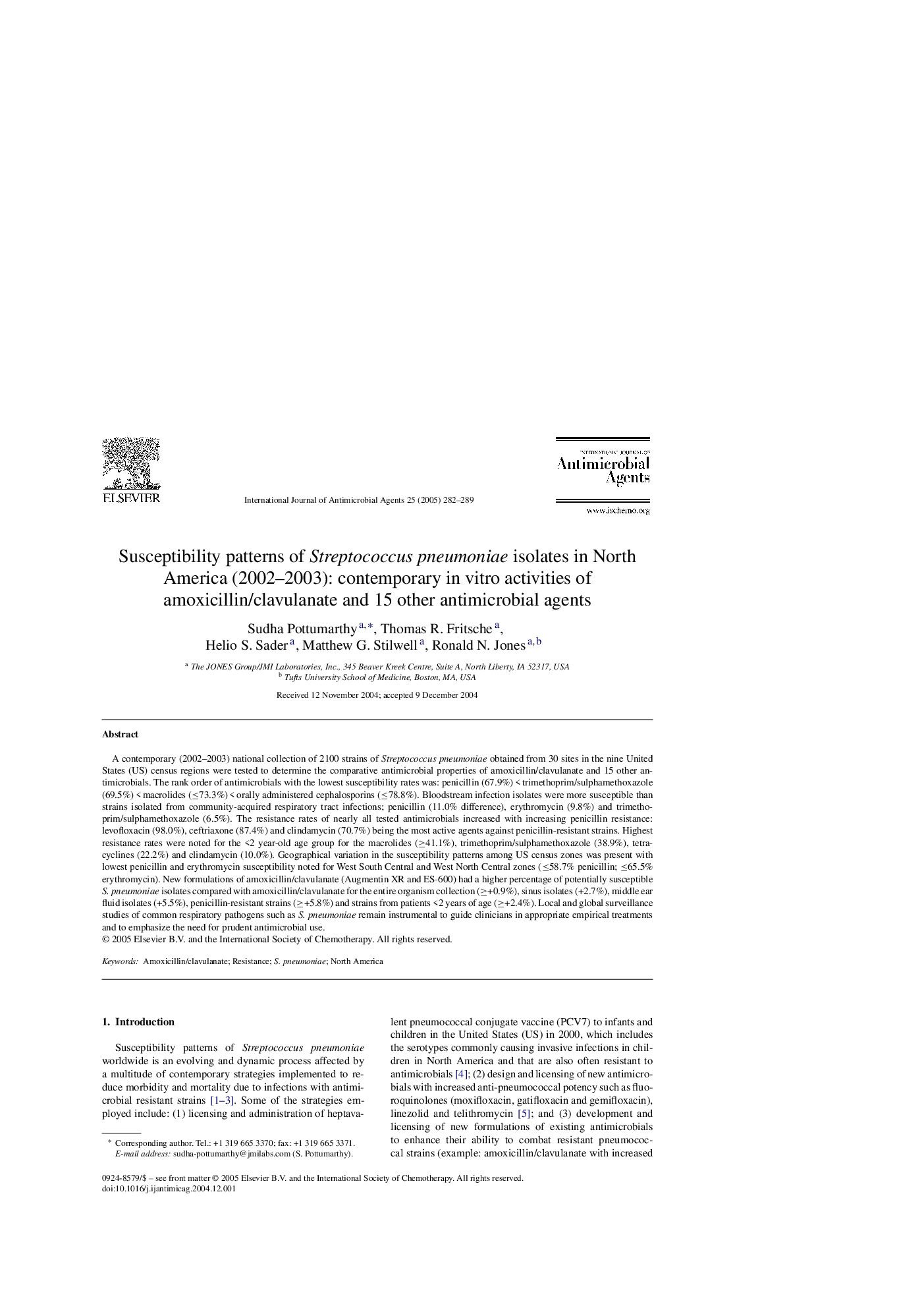| Article ID | Journal | Published Year | Pages | File Type |
|---|---|---|---|---|
| 10027952 | International Journal of Antimicrobial Agents | 2005 | 8 Pages |
Abstract
A contemporary (2002-2003) national collection of 2100 strains of Streptococcus pneumoniae obtained from 30 sites in the nine United States (US) census regions were tested to determine the comparative antimicrobial properties of amoxicillin/clavulanate and 15 other antimicrobials. The rank order of antimicrobials with the lowest susceptibility rates was: penicillin (67.9%) < trimethoprim/sulphamethoxazole (69.5%) < macrolides (â¤73.3%) < orally administered cephalosporins (â¤78.8%). Bloodstream infection isolates were more susceptible than strains isolated from community-acquired respiratory tract infections; penicillin (11.0% difference), erythromycin (9.8%) and trimethoprim/sulphamethoxazole (6.5%). The resistance rates of nearly all tested antimicrobials increased with increasing penicillin resistance: levofloxacin (98.0%), ceftriaxone (87.4%) and clindamycin (70.7%) being the most active agents against penicillin-resistant strains. Highest resistance rates were noted for the <2 year-old age group for the macrolides (â¥41.1%), trimethoprim/sulphamethoxazole (38.9%), tetracyclines (22.2%) and clindamycin (10.0%). Geographical variation in the susceptibility patterns among US census zones was present with lowest penicillin and erythromycin susceptibility noted for West South Central and West North Central zones (â¤58.7% penicillin; â¤65.5% erythromycin). New formulations of amoxicillin/clavulanate (Augmentin XR and ES-600) had a higher percentage of potentially susceptible S. pneumoniae isolates compared with amoxicillin/clavulanate for the entire organism collection (â¥+0.9%), sinus isolates (+2.7%), middle ear fluid isolates (+5.5%), penicillin-resistant strains (â¥+5.8%) and strains from patients <2 years of age (â¥+2.4%). Local and global surveillance studies of common respiratory pathogens such as S. pneumoniae remain instrumental to guide clinicians in appropriate empirical treatments and to emphasize the need for prudent antimicrobial use.
Related Topics
Life Sciences
Immunology and Microbiology
Applied Microbiology and Biotechnology
Authors
Sudha Pottumarthy, Thomas R. Fritsche, Helio S. Sader, Matthew G. Stilwell, Ronald N. Jones,
